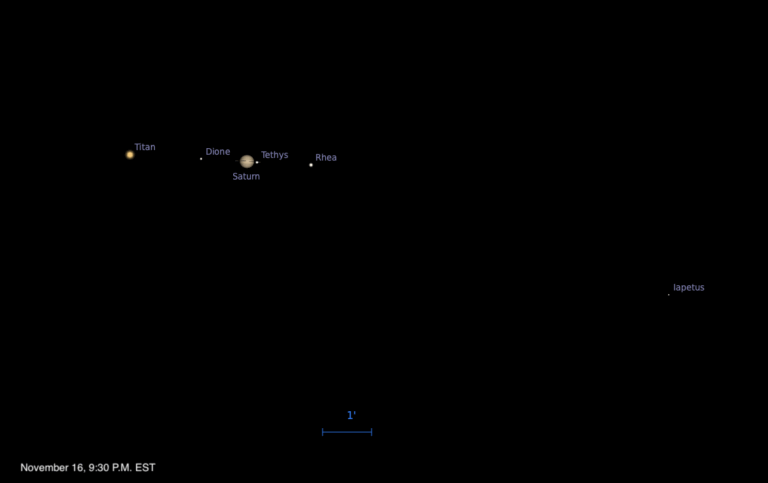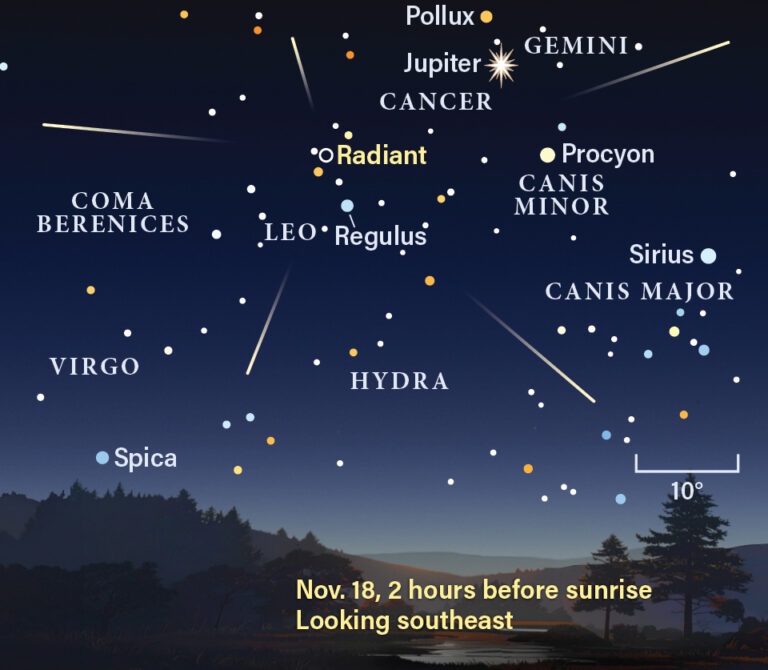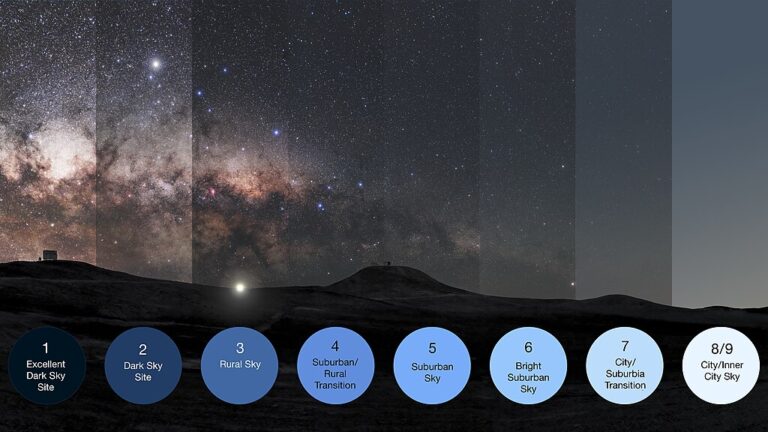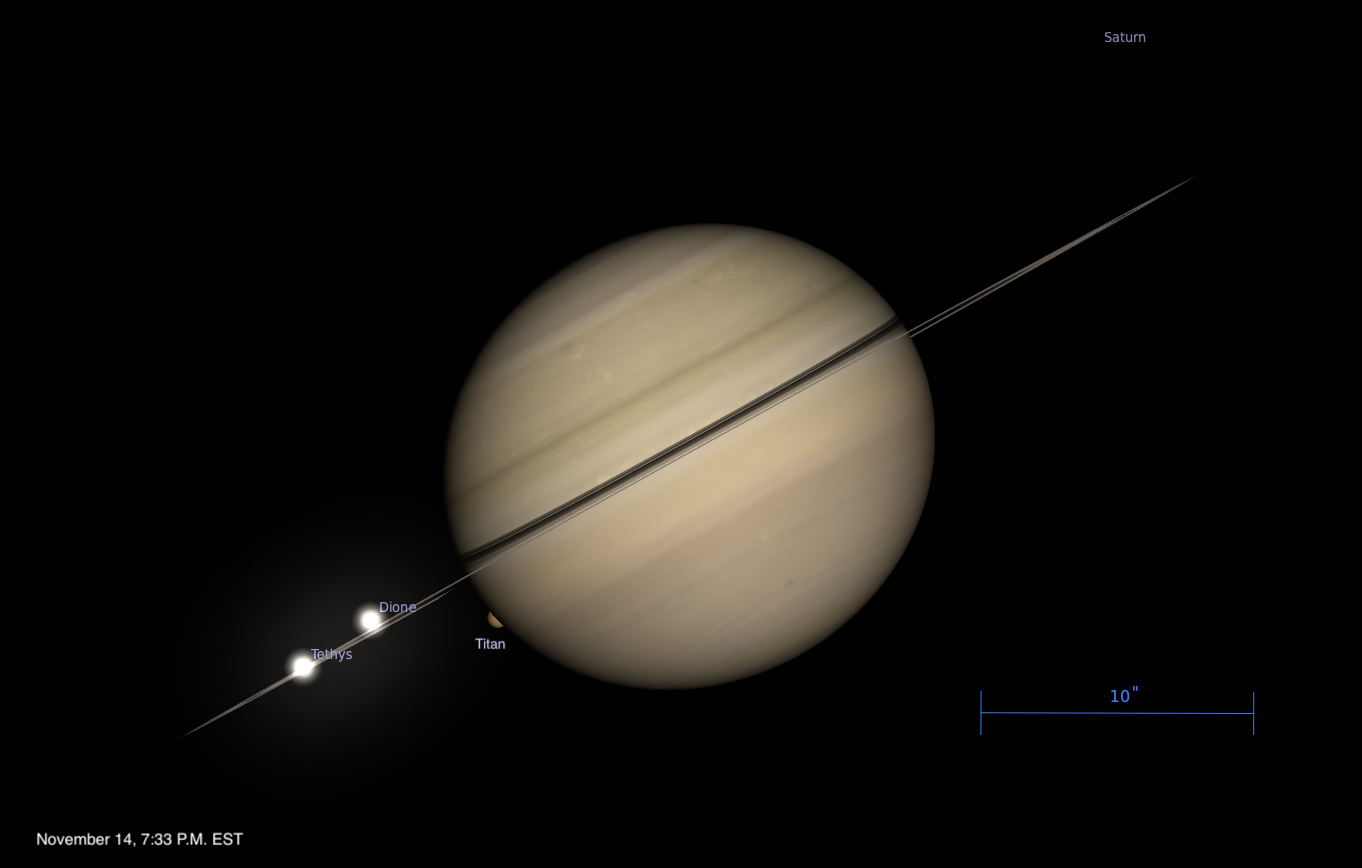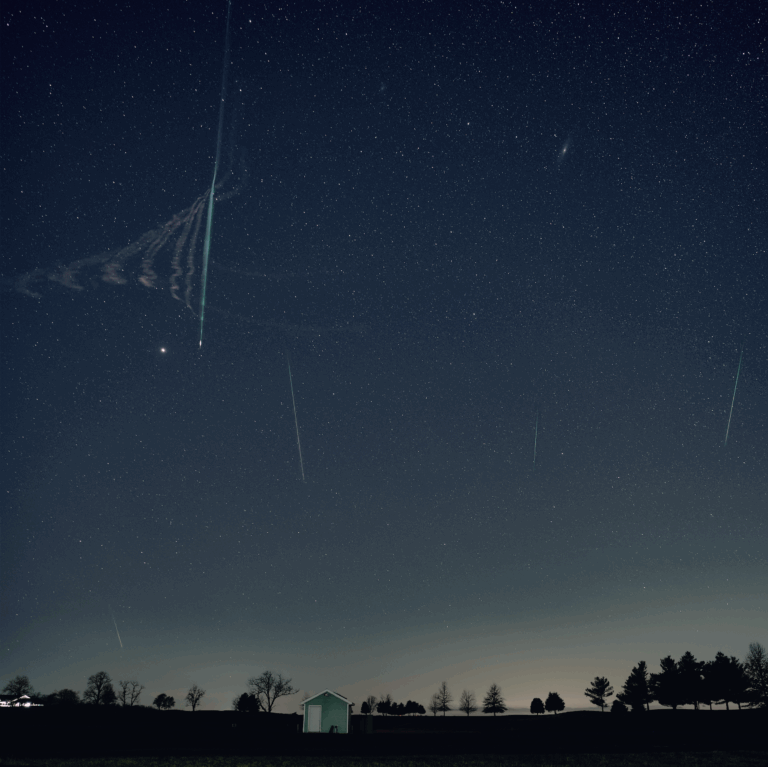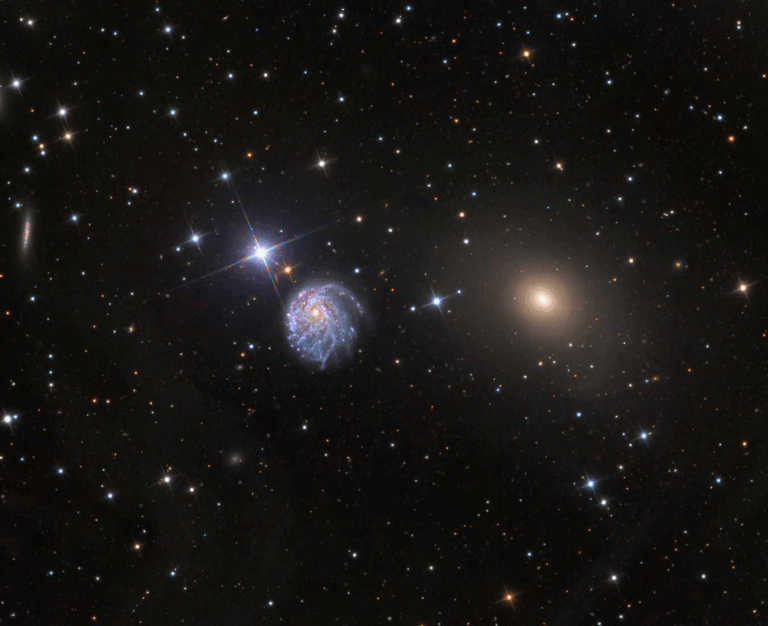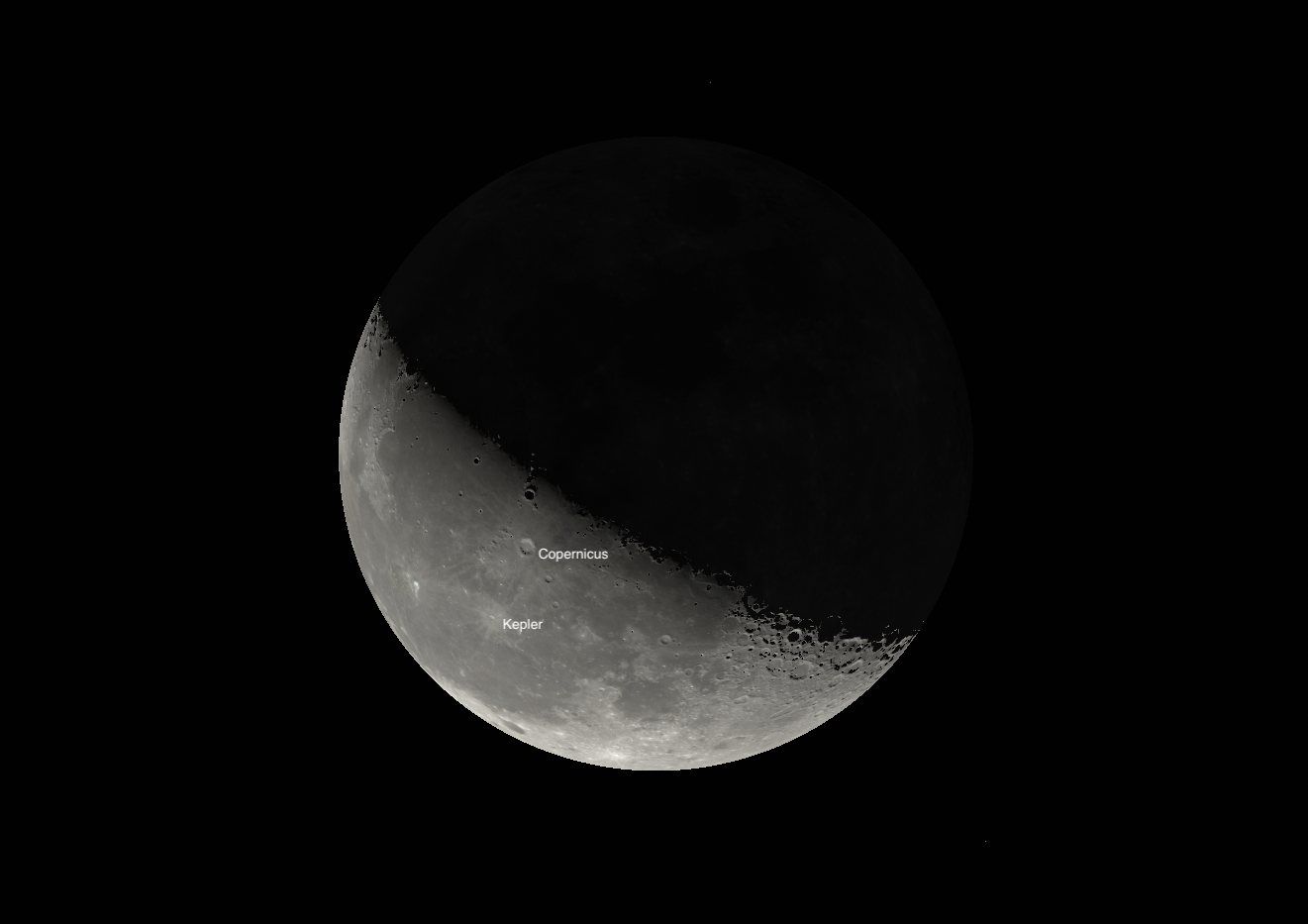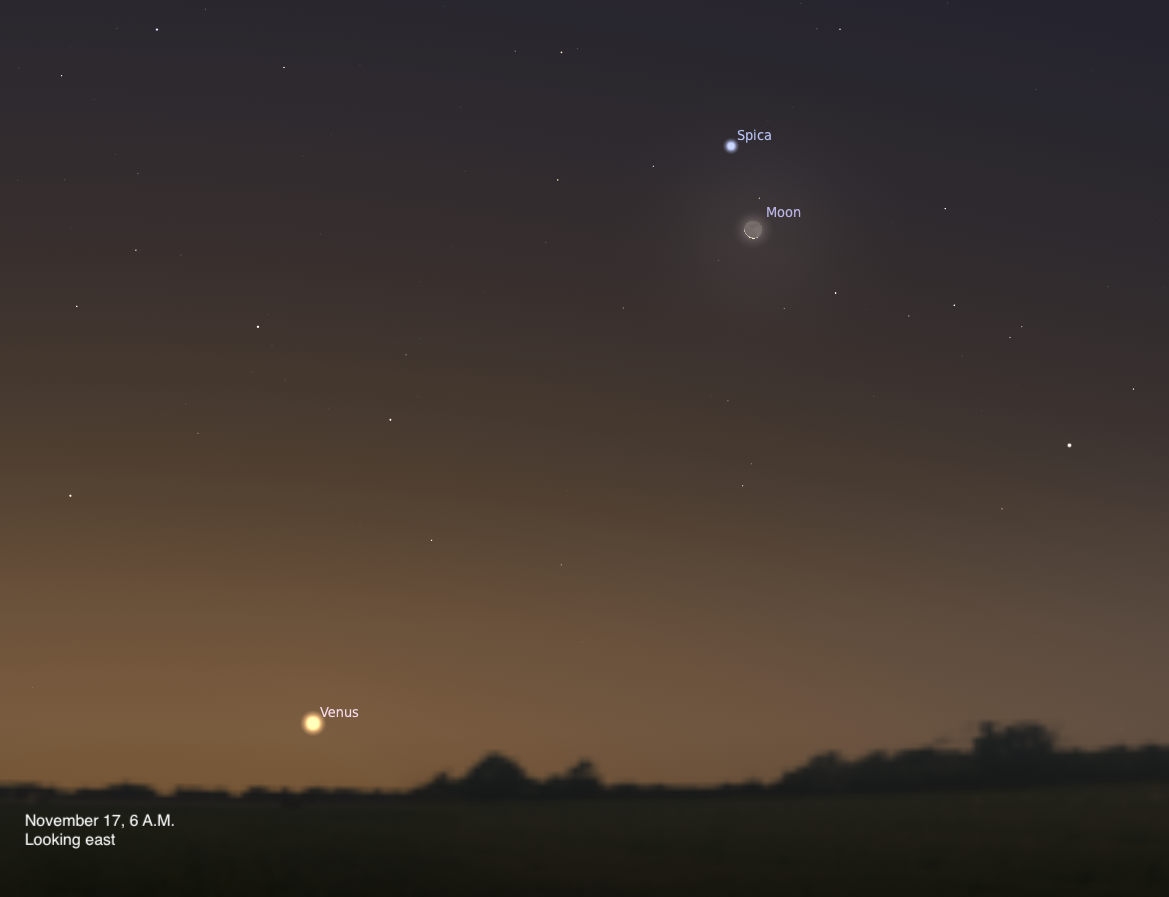
Key Takeaways:
- On November 16, a waning crescent Moon, exhibiting earthshine, will pass 1.2° south of Spica in the early morning sky, with Venus also visible and appearing 98 percent illuminated.
- During the evening of November 17, Jupiter's large moon Ganymede will transit the gas giant's disk, with the transit's progression varying for observers across different time zones.
- The Leonid meteor shower is predicted to peak overnight from November 17 to 18, offering optimal viewing opportunities in the early morning of November 18 when the radiant is high and lunar interference is minimal.
- Leonid meteors are characterized by their rapid motion and persistent trains, best observed with the naked eye by scanning areas approximately 40° to 60° from the radiant.
Looking for a sky event this week? Check out our full Sky This Week column.
November 16: Iapetus at western elongation
The Moon passes 1.2° south of Spica at 6 A.M. EST. The pair is visible in the early-morning sky before sunrise, our Moon now a delicate crescent with just 7 percent of its nearside illuminated by the Sun. If you step outside at 6 A.M. local time, you’ll also catch bright Venus to the lower left of the pair, just a bit more than 2° above the eastern horizon in Libra.
Pull out a telescope and you’ll see that Venus’ 10”-wide disk is 98 percent lit, looking nearly full. By contrast, the Moon is largely dark, but you can still make out features on the nearside thanks to earthshine, as light from the illuminated Earth lights up the Moon’s shadowed regions. Make sure to put away any optics at least several minutes before sunrise from your location, which may differ from the time below.
In the evening sky, Jupiter’s large moon Ganymede is transiting the gas giant’s disk. The planet rises around 8:40 P.M. local time in Gemini the Twins. The transit begins shortly after Jupiter rises for observers along the U.S. East Coast, as Ganymede moves in front of the planet’s eastern limb. Farther west, the moon appears progressively further in its transit, moving from east to west, as the planet rises. Ganymede finally reaches Jupiter’s western limb early on the 18th for those in the Eastern time zone only, at 12:55 A.M. EST (still late on the 17th farther west).
The Leonid meteor shower peaks overnight tonight, with the radiant rising around 11 P.M. local time. The best opportunities to catch bright shower meteors will be tomorrow morning during the early hours of the 18th, when the radiant is high and observers are on Earth’s leading hemisphere.
Sunrise: 6:48 A.M.
Sunset: 4:42 P.M.
Moonrise: 4:21 A.M.
Moonset: 3:05 P.M.
Moon Phase: Waning crescent (4%)
*Times for sunrise, sunset, moonrise, and moonset are given in local time from 40° N 90° W. The Moon’s illumination is given at 10 P.M. local time from the same location.
The Leonid meteor shower should produce many bright meteors visible early the morning of the 18th. The radiant, located in Leo to the upper left of bright Regulus and near the 3rd-magnitude star Zeta (ζ) Leonis, has climbed to more than 50° high in the east by 4 A.M. local time. The thin crescent Moon wont’ rise until around 5:30 A.M. local time, though even then it won’t interfere much.

Leonid meteors are often fast-moving and leave long, bright, persistent trains in the sky. You’re most likely to see the longest trains some 40° to 60° away from the radiant, so scan your eyes to the left and right of Leo in the sky once you’ve found it. Although the maximum rate at peak is only about 15 meteors per hour, the bright shower members that do appear will certainly be worth catching. No equipment is necessary for this — naked-eye observing is best!


